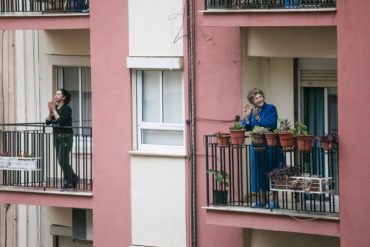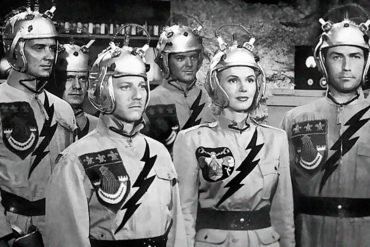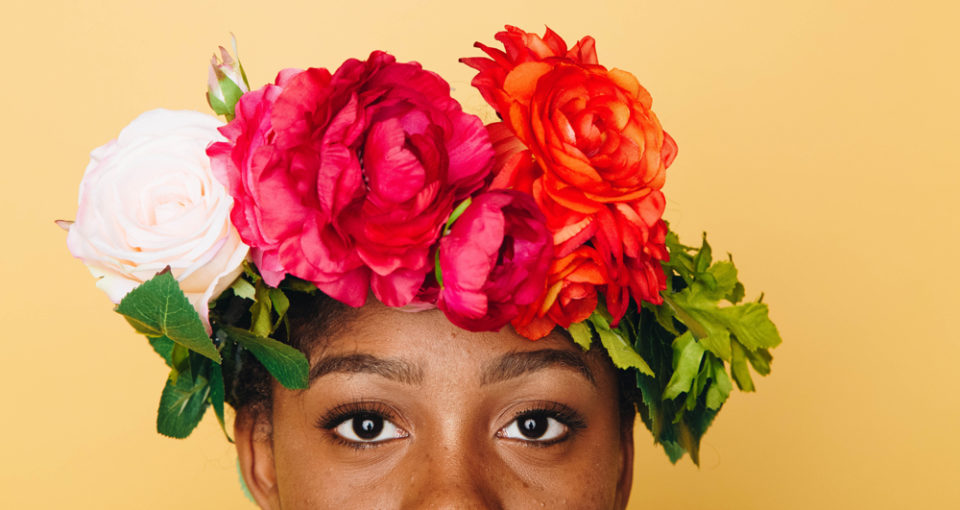My Story And Related Issues
When I was about five, I announced to my parents that I wanted to be a boy. They told me I could marry a boy one day. “Only girls can marry boys, so you should feel lucky,” my father said. I remember rolling this around in my mind: not upset or angry, just kind of confused. I didn’t push it or say much more about it, because I already understood that I couldn’t just decide to be a boy; being female had something to do with my body and couldn’t be changed at whim.
But these feelings did not disappear. In second grade, I informed a group of kids at school that I wore football shirts and boys’ sneakers because I was actually a boy. They looked at me, not really processing what I was saying. “You’re a boy? Really?” a kid named Peter asked me, in a bored tone. And that was the end of that.
I didn’t persist because I didn’t feel strongly about it. Well, that’s not quite right. I shared my distaste for most forms of femininity whenever that felt necessary: while shopping for clothes and shoes, while explaining to the girls at school why I had no interest in dolls, and while explaining my taste in toys. (I had toy soldiers, a huge toy ship, toy guns and knives which I loved aesthetically but somehow never connected to violence… and not one play oven or princess outfit.) Still, I didn’t insist that people see me as a boy because I didn’t actually see myself that way. But I didn’t see myself as a girl either. I’d say I perceived myself as an androgynous soul, but that’s way too sophisticated for my elementary school brain. I simply viewed myself as Steffi: my childhood nickname.
Steffi was a being who blazed her own path. She wasn’t interested in sports or roughhousing like most of the boys (she liked athletic apparel but not the actual games) and she didn’t want a short masculine haircut, but she dressed like a boy. When her elementary school music teacher asked all the girls to wear dresses or skirts to the holiday performance, Steffi and her mother found a dress that looked just like a big men’s Izod shirt, prompting a long sigh from the music teacher when the big night arrived. A typical feminine outfit would have been nearly impossible for her to wear; she would have felt like a prisoner in a horribly uncomfortable jail.
Female pronouns suited her fine since “it” would have been awful, and “he” was going too far in the other direction. Of course she would have preferred something androgynous, but she couldn’t even conceive of such a thing.
I’ve kept this basic stance towards gender throughout my life. I still love boys’ and men’s clothes and feel an aversion towards clothing with any kind of feminine cut: not for other people, but for myself. When I travel, I’m often infatuated by traditional male outfits but show little interest in their feminine counterparts. I relate to princes more than princesses, boys’ names more than girls’—even, strange as this may sound, male puppies more than female ones.
And yet… I’m not transgender. I have no desire to rid my body of feminine markers or to interact as a man. I’ve been involved with all-female social and professional groups and feel I belong. People always code me as unambiguously female despite my androgynous clothes and style. I’m still just Steffi, I guess. I often say I should go back to my childhood nickname, and I’m feeling particularly nostalgic for it right now. Steffi was a character who still feels like me.
When I moved to Crown Heights, Brooklyn for a year of research among the Chabad Hasidim’s teenage girls, I expected to deplore the stark gender segregation everywhere outside the family. I always resented the much less stringent gender expectations in my more liberal circles, so it seemed fairly obvious that I would cringe at a community whose emphasis on gender was much more far-reaching. In fact, I loved the all-girls schools and parties and the all-women discussion groups: relished the camaraderie and confidence that often shone when girls and women weren’t overshadowed by aggressive guys, or worried about heterosexual energy and tension.
I quickly decided that this aspect of the community was wonderful… for most. But I also got to know many who were miserable under this system: who just didn’t fit. They wanted to study Talmud intensely like the men, or they felt sexually attracted to women and not men, filling their high school years with dread over future expectations… or they seemed profoundly ill at ease with the requirement that girls and women wear dresses or skirts and clearly mark themselves as female, like one fascinating girl I observed, who somehow managed to look like a yeshiva boy in her straight long skirt, white man-tailored Oxford shirt, and short masculine haircut.
I would have been one of those outliers. My mother and I often squabbled when we went clothes shopping, with her trying to coax me into trying more feminine styles. In the end, she went along with my desires, but we had some stressful times. Dressy affairs were particularly contentious until we found something that satisfied us both. I remember wearing a shiny green vest, black pants, and a bowtie to our cousin’s wedding, when I was maybe 7 or 8. People complimented me, said I was a cutting-edge fashionista. My mother glanced at me and laughed. She knew the whole truth: that I refused even to touch anything that smacked of femininity, and, after weeks of looking, this outfit finally appeared: a gender-neutral beacon of peace.
What kinds of fights would have erupted if I had grown up in a community that expected me to wear a dress or a skirt every day? Somehow, I doubt I would have given in easily. There would have been sobbing and moaning and maybe worse. True, I wore skirts every day in Crown Heights when I lived there, but that was part of a research project I had chosen myself, a short-term game that involved a costume to help the community relate to me. It would end whenever I decided the time was right.
But what if my parents had said: “OK, if you insist on dressing like a boy, you’ll have to live like one: go to boys’ schools, camps, and social activities, and give up your community of girls”? I would not have wanted that either—and not just because I lacked the proper equipment to fit in visually with the boys.
I wouldn’t have wanted to be a boy or a girl in that culture. Not because either gender has objectively bad lives, but because neither scheme would have fit me. Socially, I interact much more like a woman, focusing on interpersonal nuances. There are things that feel profoundly right about womanhood to me—and other things that feel profoundly right about manhood. In the circles I travel in now, I can get by as a person on the margins: a woman medically and bodily, and a quirky androgynous soul who does my own thing when it comes to self-presentation and lifestyle.
I could just leave it there and write off Orthodox Judaism for me and others like me. But here I am, years after my book about the teenage girls in Hasidic Crown Heights came out, still writing about the community, still friendly with people who are involved. As an outsider looking in, I love it there. I feel too much affection for the culture to accept that I am fundamentally unembraceable within it.
The Talmud does wrestle with defining people who don’t fit neatly into the “male” or the “female” scheme. The rabbis discuss categories like the tumtum: a person with unclear genitalia (perhaps covered by skin), the androgynos: a person whose genitalia have both male and female characteristics, the saris: a male who does not go through puberty by age 20, and the aylonit: a female who doesn’t go through puberty by age 20. Since men and women have different obligations within Judaism, the rabbis discuss how to handle these situations where status as a man or woman is not clear. People in the androgynos category are particularly interesting, since they’re seen as men in some ways and women in others: an in-between situation.
Fascinating as this is, it’s all based on obvious bodily characteristics: it doesn’t address the issue of internal gender identity and orientation—and how that might differ from the assumptions we’d make based on external appearance. I’m guessing the rabbis weren’t exposed to this issue and just didn’t recognize it as a phenomenon to explore. Anyone they knew who might have struggled along these lines likely kept quiet about it and tried to fit themselves into the “normal” scheme. If the Talmudic rabbis were active today, with high profile cases of transgender people who do not identify with their all-too-clear biological sex, and others who discuss not fitting into any gender category… surely the discussion around gender would broaden.
Contemporary rabbis have extrapolated all kinds of decisions on issues that weren’t mentioned in the Talmud because they just weren’t relevant back in the day. Perhaps this is a new issue for them to explore. OK, who am I kidding: the odds that Orthodox rabbis will want to redefine gender based on internal thought process that might clash with external appearance are exceedingly small. But a woman (or a man, or a person who is somewhere between the two extremes) can dream. And sometimes, dreams beget reality.
Judaism certainly wouldn’t be the first traditional community to recognize people whose mindsets and self-conceptions place them outside of the standard gender binary. Many native American tribes have long embraced “two-spirit” members: people who, regardless of their physical appearance, seem to combine qualities of both genders. Typically they’ve been biological males who display many feminine personality traits and preferences—or biological females whose preferences tend towards the masculine.
Many tribes have maintained special roles for their two-spirit members. They’ve often created special rituals for children whose behavior and desires seem to diverge strongly from their biological sex, to determine whether they are, in fact, two-spirited. One intriguing example: a boy was placed in an enclosure of brush that included a man’s hunting bow and a woman’s basket. The brush was set on fire, and the boy was told he could grab only one item before rushing to escape. If he grabbed the basket, he was seen as truly two-spirited and treated as such.
This seems rather arbitrary and dangerous (though I imagine the adults involved knew what they were doing and made the scene seem a lot more dangerous to the boy than it actually was). I’d greatly prefer long-term analysis of the child’s behavior and choices, along with intensive interviewing of the child to get a sense for the kid’s mindset over time. But I love the overarching goal: to place kids into situations that fit their essential spirits and identities, which may diverge from their biological makeup.
In typical native tribes, the two-spirited have been viewed as having special insight, partly because they could draw from both male and female perspectives, and, because of that, were given license to behave how they saw fit in many ways. People figured these souls knew what they were doing. A wide range of gender expression has been accepted and embraced in native communities, depending on individual needs. To give a sense for how this might play out, a two-spirited person with male biological markers might wear women’s clothes and do traditional women’s work, and he would not be expected to have sexual relations with women.
Suggestions For Orthodox Communities
So how might something like this work in an Orthodox community that practices educational and social gender segregation? I’ll offer some suggestions; of course there are many more possibilities depending on particular situations. I should also make clear that no decision along these lines is irrevocable: a kid might rail against standard gender roles in childhood but decide to embrace them as an adult. Each life trajectory is unique—though, in my experience, most who feel adamantly beyond gender expectations as children feel some kinship with that stance as adults.
The prospect of building a special school for gender nonconforming souls intrigues me, but I’m well aware that most of these communities are strapped for money and couldn’t afford to build an additional school. The least disruptive option might involve intensive professional interviews of kids who express vehement dissatisfaction with gender expectations to get a sense of where they fall in terms of gender identity. Then they could enroll in the school that’s meant for the gender they feel more attached to. To keep the community’s basic expectations intact and not cause an uproar, maybe these students would need to follow dress codes for the gender they identify with more strongly while in school, wearing whatever uniform is in place. Beyond school, exceptions could be made for them.
In my case, if I were currently a high school student, I’d attend school with the girls and wear the uniform with its associated skirt while there. After discussion with me, the professionals would determine that I could dress in the androgynous style I favor outside of school. There would probably be some tweaks in the interest of modesty, like making sure my elbows are covered, but I could wear loose-fitting pants and androgynous shirts because they fit my gender identity. If I knew people were trying to understand and accommodate me, and I was allowed to choose my clothes most of the time, I’m sure I could handle wearing skirts just in school—especially considering I did it for over a year to boost my research success when I lived in Crown Heights.
Cases of full-blown transgender identity, where a kid begins attending school for the gender that does not match genetics and biology, would surely cause a huge stir in Orthodox communities. But if changing for athletic activities were a concern (I have the sense that very little of this happens in these schools, but I’m sure there’s a range of frequency), affected students could be given private spaces for that. A private bathroom could be designated. More liberal communities might deplore this singling out, but I well understand that strict Orthodox yeshivas have very different expectations from typical American public schools. For that matter, a private bathroom in the building could benefit many students at various times, for various reasons. This would only come up when students express emphatic dissatisfaction with current gender expectations: a rare occurrence in most cultures.
Most likely this would only happen occasionally, but, when it does, it may just save the affected student’s life. Suicide rates are alarmingly high among transgender people in most Western, secular societies. The psychological stress of being transgender in a strict, gender-segregated, Orthodox world is likely even more intense since there’s little room to occupy niches at the margins, like the transgender kid who plays football with the boys despite female genitalia.
Orthodox communities could also pool resources to offer boarding schools for non-gender-conforming students. If many groups around the country or perhaps around the world chipped in, no one community would feel an undue financial burden. This would eliminate strain on existing schools in their neighborhoods and offer more targeted support for people who don’t fit neatly into the expectations for “male” or “female”—or whose outward appearance doesn’t match their gender identity.
When these gender-atypical souls finish school and begin to take on more adult roles, a humane community would work to support them, just like the native American tribes I’ve discussed. Because this sort of thing is unusual, it would not dismantle the overall culture. Communities could support people who don’t feel right about heterosexual marriage and find ways for people with atypical gender identity to share their ideas and insights, often hard-won from feelings of alienation. Native American groups have placed their “two-spirit” members in special roles like mediators, artists, and people who devote their energies to the tribe as a whole since they often don’t choose to be part of an individual family unit. Their talents and passions are respected and used—unlike most Orthodox communities which offer them no place and tacitly push them out.
As a fun experiment, I’ve asked many students and friends if they would be wiling to wake up in an opposite gender body very similar to their own but with a complete gender shift if, as compensation, they were offered a billion dollars, and an assurance of a very long and healthy life for themselves and everyone they care about. The overwhelming majority immediately say no. I find this amazing. Assurance of health and longevity for them and their circle and a billion dollars, and they turn it down at once, because their gender identity is so essential to their being.
This response points up a few key facts. Allowing gender fluidity would not dismantle Orthodox communities, since most feel perfectly at home in their prescribed gender role. And… feelings about gender are deeply entrenched and emotionally fraught. Just as most with typical gender expression would not take huge rewards if they had to give up bodies that match their self-concept, most who are atypical in this sense suffer enormously when their social worlds do not allow them to express their deepest selves.
The standard Orthodox insistence that people simply learn to accept the behaviors expected based on their biological sex is inhumane and anti-soul. If the soul truly exists apart from the brain—if it can survive the body’s death because it’s carved by the hand of a God who transcends seeming laws of nature—we must respect, embrace, and love souls whose deepest expression seems to oppose their bodily casing.
***Image Credit: “Change?” by Arthur John Picton on flickr





